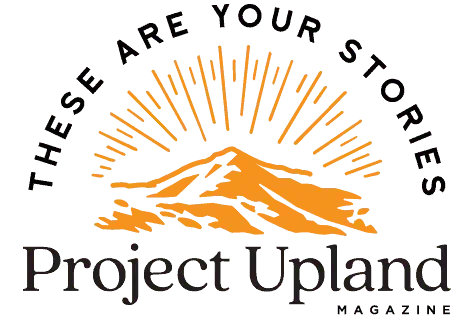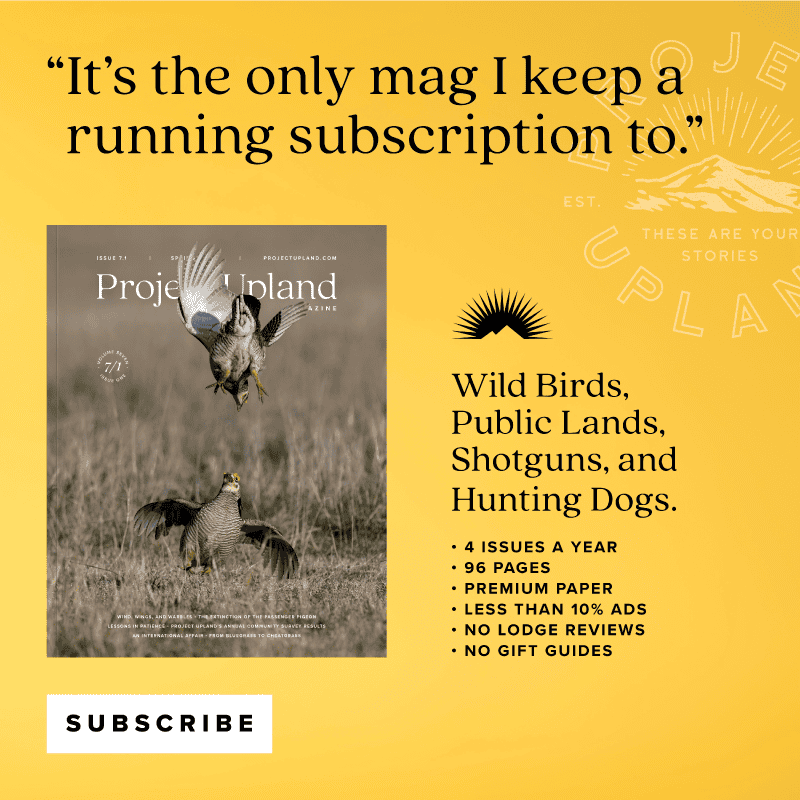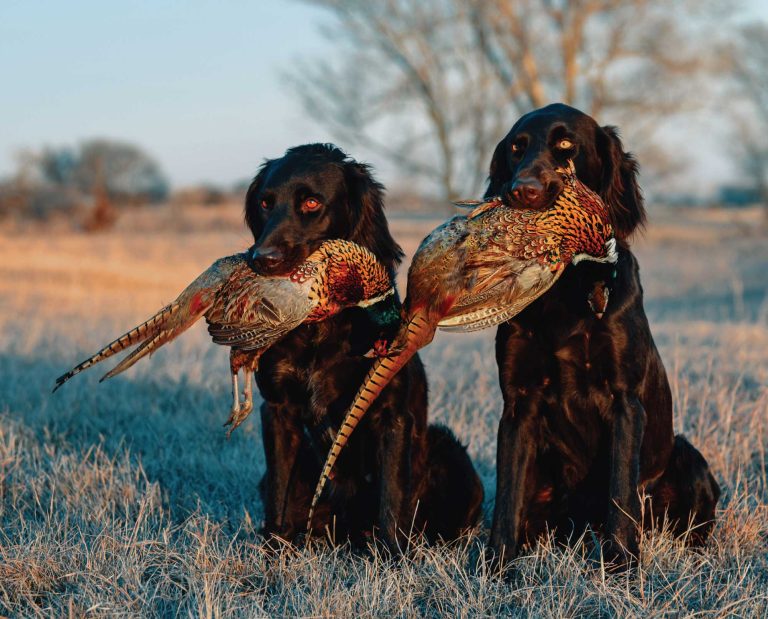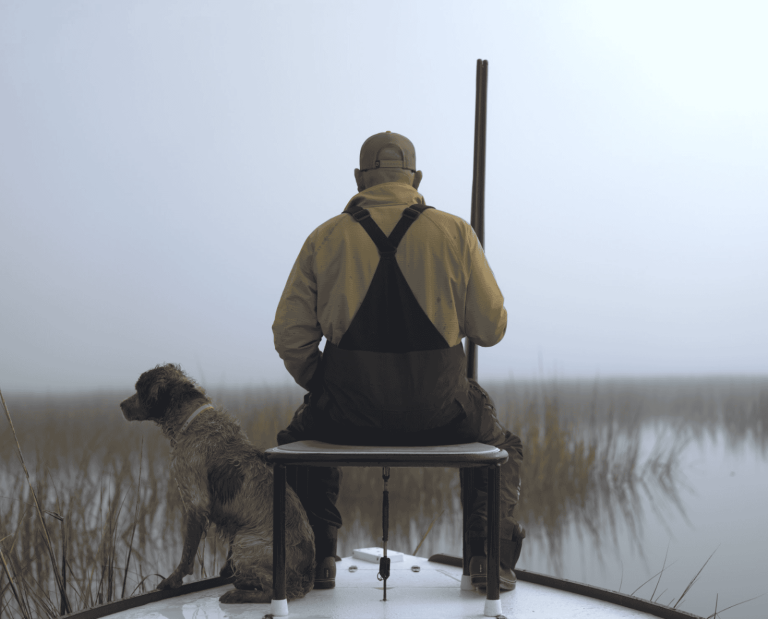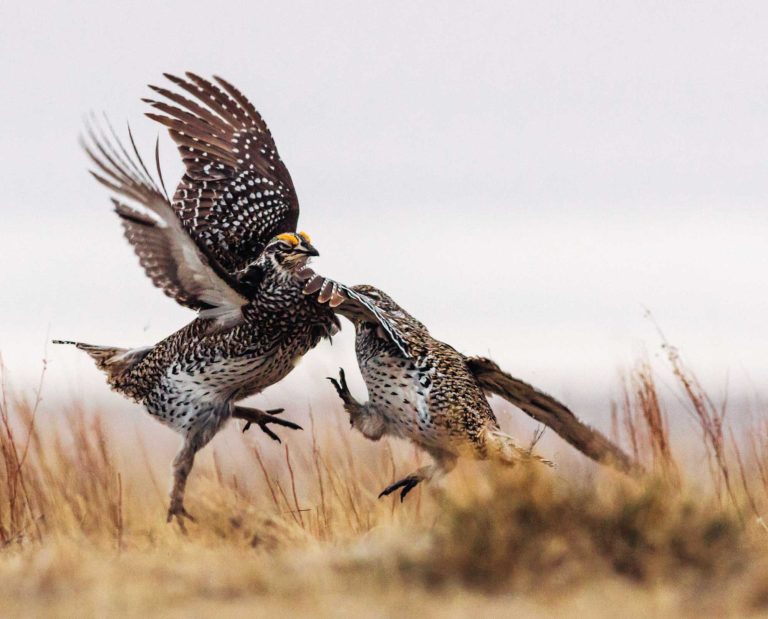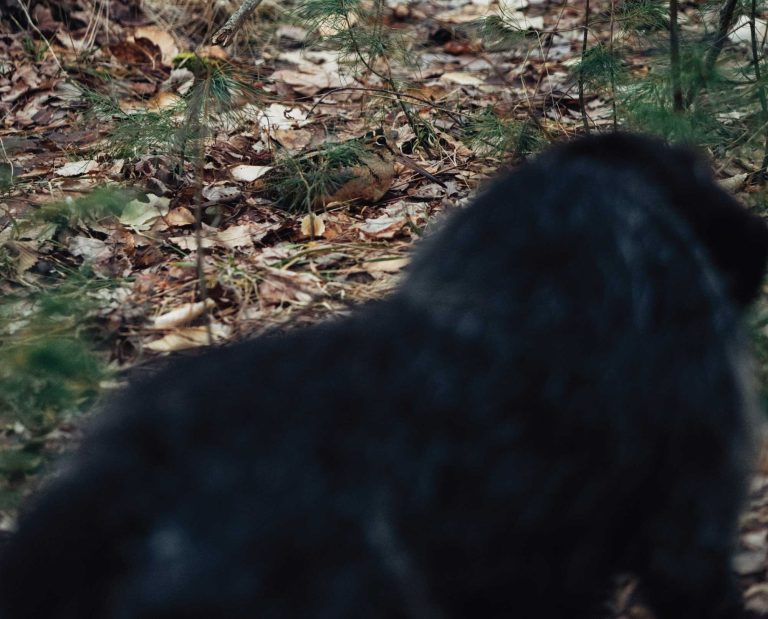Why Losing Funding for Songbird Science Would Hurt All Bird Species
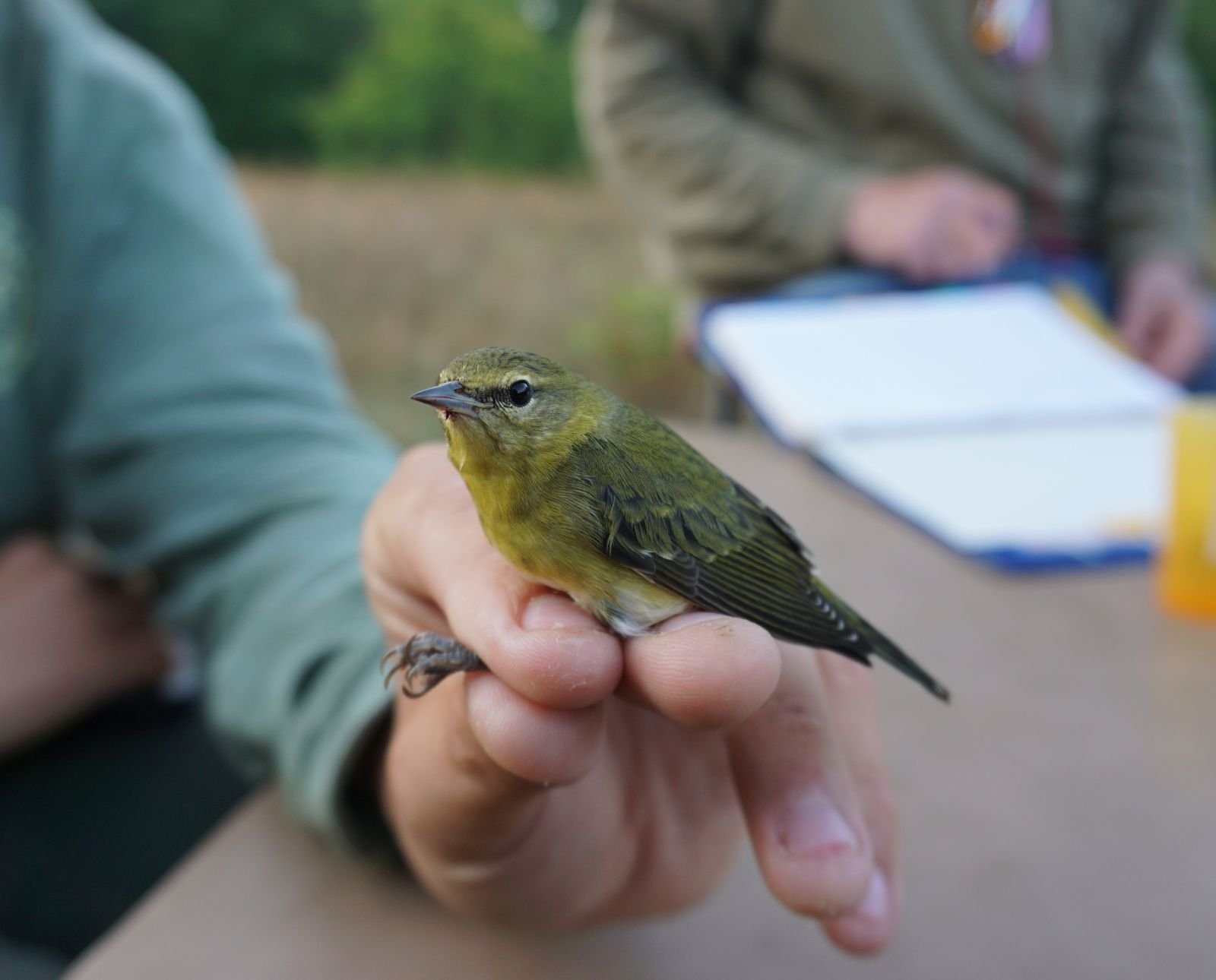
Budget cuts and layoffs threaten “tweety bird” research. Here’s why upland hunters should care.
When I go bird hunting, I sling binoculars and a camera over my vest and carry a shotgun in my hand. Similarly, I keep a spotting scope in the backseat of my truck, just in case. Birdwatching and bird hunting are equal parts of who I am, and bird research is what I do for a living.
So when I hear folks dismiss songbirds as “tweety birds”—a harmless jab common among hunters—I get it. Most of them don’t flush, don’t hold, and don’t make the dinner table. But what many of us miss is that these little birds are sounding the alarm about something that’s coming for all of us who care about wildlife and wild places.
Over the past decade, I’ve bounced around the country conducting bird research. I just wrapped up a master’s degree studying dusky and ruffed grouse, and I’m now beginning a PhD focused on migrating songbirds. That experience gives me a front-row seat to the damage these proposed and ongoing federal cuts are already causing. I have a clear view of how much worse things could get for bird conservation and research if they continue.
It was quite the spectacle to see the hunting community at large rally against the proposed landgrabs in earlier versions of the “One Big Beautiful Bill.” I’m here to tell you that remaining proposed agency cuts, especially to the U.S. Geological Survey (USGS), are just as existential.
USGS: The Unsung Backbone of U.S. Wildlife Science
Although USGS was originally created to chart the terrain of the western United States in the 1800s, over the years, the agency has expanded its scope well beyond geology. As ecology emerged as a vital scientific field and public land management became more complex, Congress added biological research to the agency’s responsibilities.
Unlike agencies that manage land or enforce regulations, USGS exists solely to provide unbiased science. Although the U.S. Fish and Wildlife Service (USFWS) still oversees and enforces banding permits, it’s USGS that maintains the records, analyzes the data, and supports the science behind bird banding and breeding bird surveys.
The Bird Banding Lab
Most of us are familiar with migratory gamebird banding and probably know someone who has harvested a banded duck or woodcock. These efforts are coordinated through the USGS Bird Banding Lab (BBL), one of many wildlife-focused programs housed within the agency’s Ecosystems Mission Area (EMA). The BBL issues about one million bird bands each year and has distributed over 79 million bands across North America since 1920, supporting both U.S. and Canadian banding efforts. To date, the lab has recorded roughly 6.5 million band encounters, including harvest recoveries and resightings. It’s one of the most important long-term wildlife datasets on the continent.
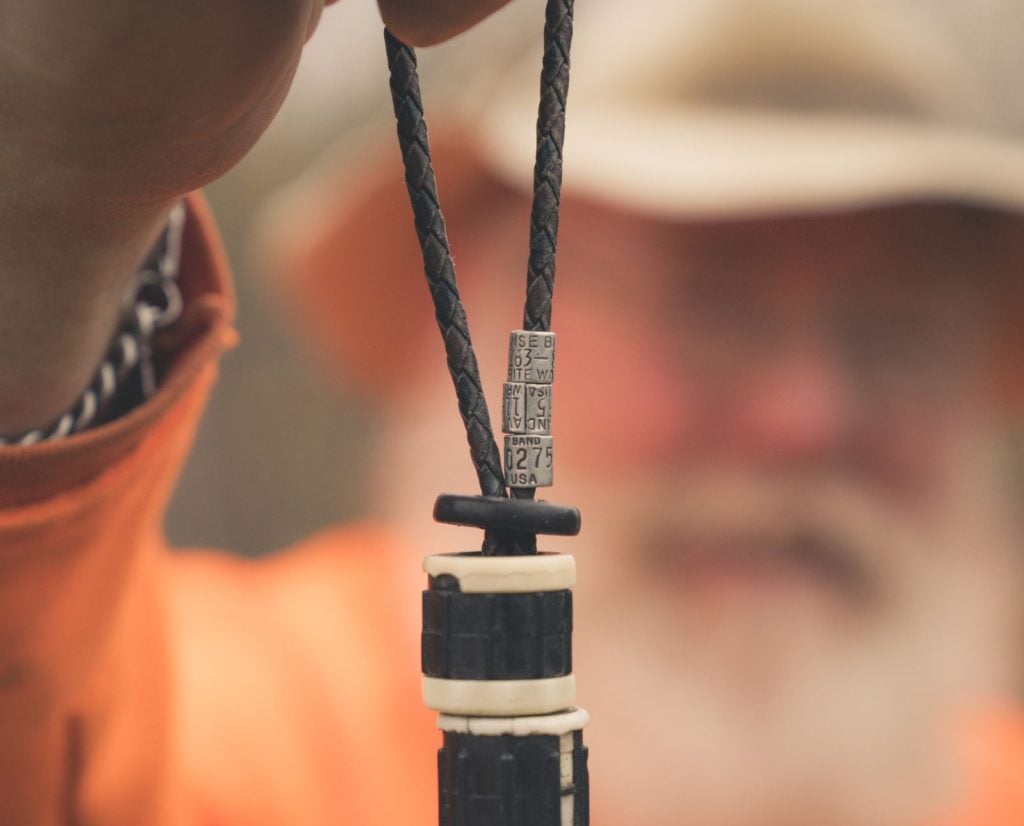
The Breeding Bird Survey
The second cornerstone of USGS bird science is the North American Breeding Bird Survey (BBS), a massive citizen science effort that has quietly shaped how we understand bird populations for sixty years. Conducted annually since the 1960s, the program now includes around 3,500 active routes across the U.S. and Canada. Each route spans 25 miles and includes 50 roadside stops, where trained volunteers and wildlife professionals record every bird seen or heard during a three-minute count.
LISTEN: The Mystery of Grouse Drumming – The Project Upland Podcast
Behind the curtains, USGS biologists and data managers coordinate these routes, maintain the database, and model trends for more than 400 bird species. Their work is essential to transforming raw bird counts into usable information.
Bird Data Collected By USGS Supports Broader Wildlife Research
Because of this effort, we now have clear evidence that many songbird species like wood thrushes, meadowlarks, and all swallows have declined significantly, while waterfowl and wetland birds have increased in response to wetland protections and conservation policies of the 1980s and 1990s. More than 700 peer-reviewed publications have used BBS data, and it plays a growing role in the management of several migratory game birds by providing long-term, regional population trends that help guide harvest decisions. It is now the primary monitoring tool for mourning doves and band-tailed pigeons. In fact, BBS data have replaced older surveys like the Mourning Dove Call-Count Survey due to broader coverage and stronger statistical performance. Recent studies have also used BBS data in combination with other survey methods to refine wood duck population estimates, especially in high-use regions like the Atlantic Flyway.
USGS also supports a broad network of wildlife research through its Cooperative Research Units (CRUs), regional science centers, and dedicated recovery work for threatened species. The CRU program, which includes 43 units across 41 states, partners USGS scientists with universities and state agencies to train emerging wildlife PhD researchers while tackling conservation issues.
At the Northern Prairie Wildlife Research Center in North Dakota, USGS biologists conduct long-term studies on grassland birds, pollinators, wetland ecosystems, invasive species, and piping plovers, producing data that informs habitat restoration across the Great Plains. USGS also houses the Interagency Grizzly Bear Study Team at its Northern Rocky Mountain Science Center, where scientists have tracked grizzly bears in the Greater Yellowstone and Glacier ecosystems for decades to support recovery and management planning.
Beyond threatened and invasive species, USGS researchers play a leading role in wildlife disease monitoring, studying the effects and spread of West Nile virus, avian botulism, and highly pathogenic avian influenza in both game and non-game birds. The agency also leads efforts to map and model mule deer, elk, and pronghorn migrations across the West, having documented nearly 200 major corridors in collaboration with states and tribes. These maps now guide land-use planning, highway mitigation, and conservation policy for some of the most iconic big game herds in North America.
Impacts Of The Proposed Cuts
Under the Trump Administration’s FY 2026 budget proposal, funding for USGS EMA would be cut by 90 percent, dropping from $293 million to $29 million. That cut alone would eliminate 1,000 staff, or about 80 percent of the EMA workforce, which is almost entirely biologists, technicians, and data analysts.
And for what? That $264 million savings represents just 0.014 percent of the current $1.9 trillion federal budget deficit—the amount the government is projected to overspend in a single fiscal year. In other words, gutting nearly all federal wildlife science would have virtually no impact on balancing the budget but would carry enormous consequences for conservation and management across the country.
Phasing Out The EMA
Following the proposed budget, the Office of Management and Budget has already directed USGS to begin phasing out the EMA. This includes winding down the CRU program, where more than 120 federal scientists and 600 graduate students stand to lose their positions as funding disappears. Experts warn that no other agency can absorb this work; there is no backup plan for the scale and specialization of the science the EMA provides. Eliminating it would not only halt critical research but also sever a nearly 150-year scientific lineage that began with C. Hart Merriam’s first federal wildlife surveys.
Retired USGS CRU Program chief, John Organ, called the proposal a “generational catastrophe” for conservation science, warning that once dismantled, this institutional capacity may never be restored.
Loss Of Statistical Modelling
Among the most at-risk areas of expertise is statistical modeling, a foundation of modern wildlife science. Most of wildlife research and management is just a bunch of fancy math. These days, wildlife scientists often have as much training in statistics as in biology. The field of ecological modeling, especially for estimating populations and accounting for imperfect detection, is evolving rapidly. USGS researchers and partners have long been at the forefront of this work, developing the tools that agencies rely on to guide management decisions. Cutting this expertise now risks leaving a generation of scientists behind and setting back the progress for decades.
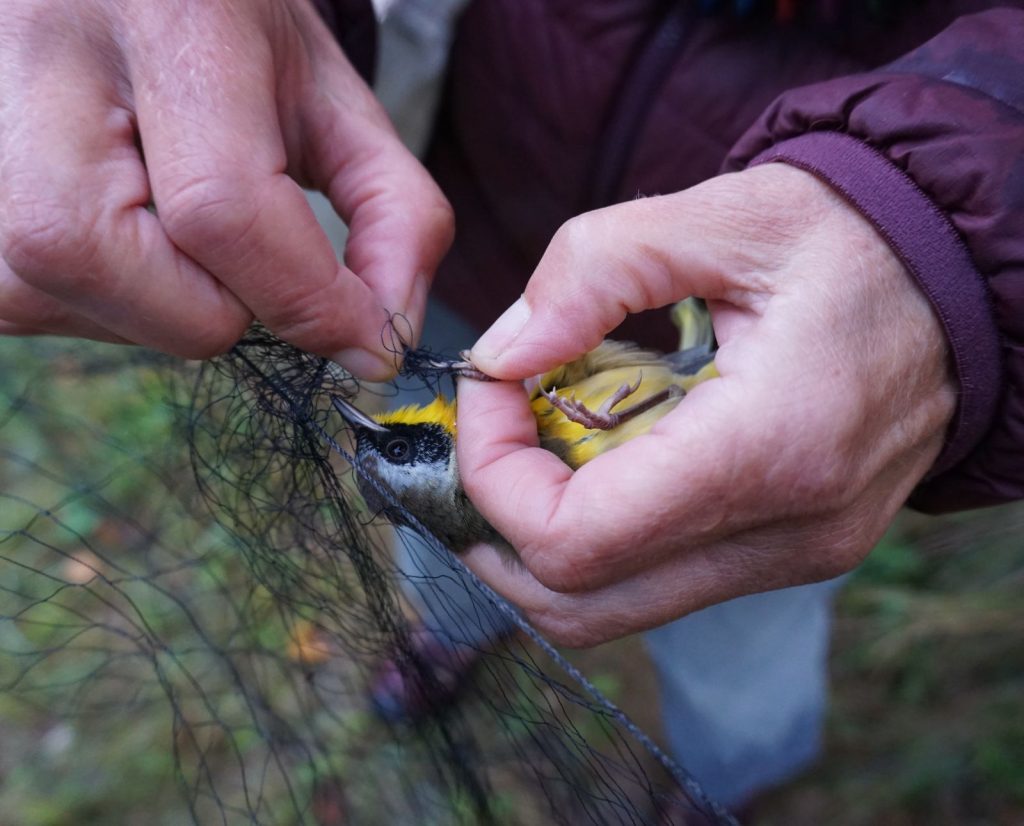
Jobs And Careers Will Disappear
I spent a season working for the USGS on an eastern Montana project aimed at measuring roadside bias in the BBS. Since then, I’ve met many more career USGS scientists doing deeply technical, often thankless work in service of understanding the natural world. Some of those colleagues have since retired early, fearing what this administration might do to their programs. Others, mostly highly trained researchers with PhDs, have accepted that their jobs will soon disappear. A research career with USGS had long been my goal, too.
Songbirds Indicate Ecosystem-Level Changes
Songbirds aren’t just scenery. They are indicators of ecosystem change. Because they respond quickly to shifts in land use and habitat quality, tracking their populations gives us a powerful, landscape-scale readout of environmental health. Whether you’re managing timber or cattle, restoring grasslands, or evaluating upland bird habitat, knowing what the songbirds are doing is often the first way we know if it’s working. If the BBS and those data disappear, so does our ability to course-correct.
When researchers lose the ability to detect regional declines in aerial insectivores or grassland sparrows, we also lose our chance to address problems before they cascade through the ecosystem. And in many places, those problems are already here. Entire communities of migratory songbirds, species that once lit up prairie skies or shaded aspen groves, are blinking out. If we care about maintaining the wildness of the places we hunt, we have to care about what’s happening to the rest of the birds that share those places.
The same is true for bird banding. From warblers to woodcock, the BBL maintains the records and infrastructure that allow researchers and agencies to monitor movements, estimate survival, and evaluate harvest. If it disappears, so does one of the most powerful datasets we have to measure bird population change over time.
What Happens Next
Congress will be debating the FY2026 budget in the months ahead, and the House and Senate Appropriations Committees are already drafting bills that will determine what gets funded. Although the President proposes a budget, it’s Congress that ultimately decides where the money goes.
It’s not too late to speak up. Earlier this year, hunters, anglers, and outdoor enthusiasts from across the political spectrum rallied in force against proposed public land rollbacks in the “Big Beautiful Bill”—and it worked. That same collective voice is needed now.
If you care about songbirds, upland habitats, or the science that helps manage them, call your congressional representatives. Tell them to reject the 90 percent cut to the USGS Ecosystems Mission Area. Support full funding for the Bird Banding Lab and the Breeding Bird Survey. Let them know that conservation decisions require data. If we lose the capacity to monitor wildlife populations, we may never get it back.
